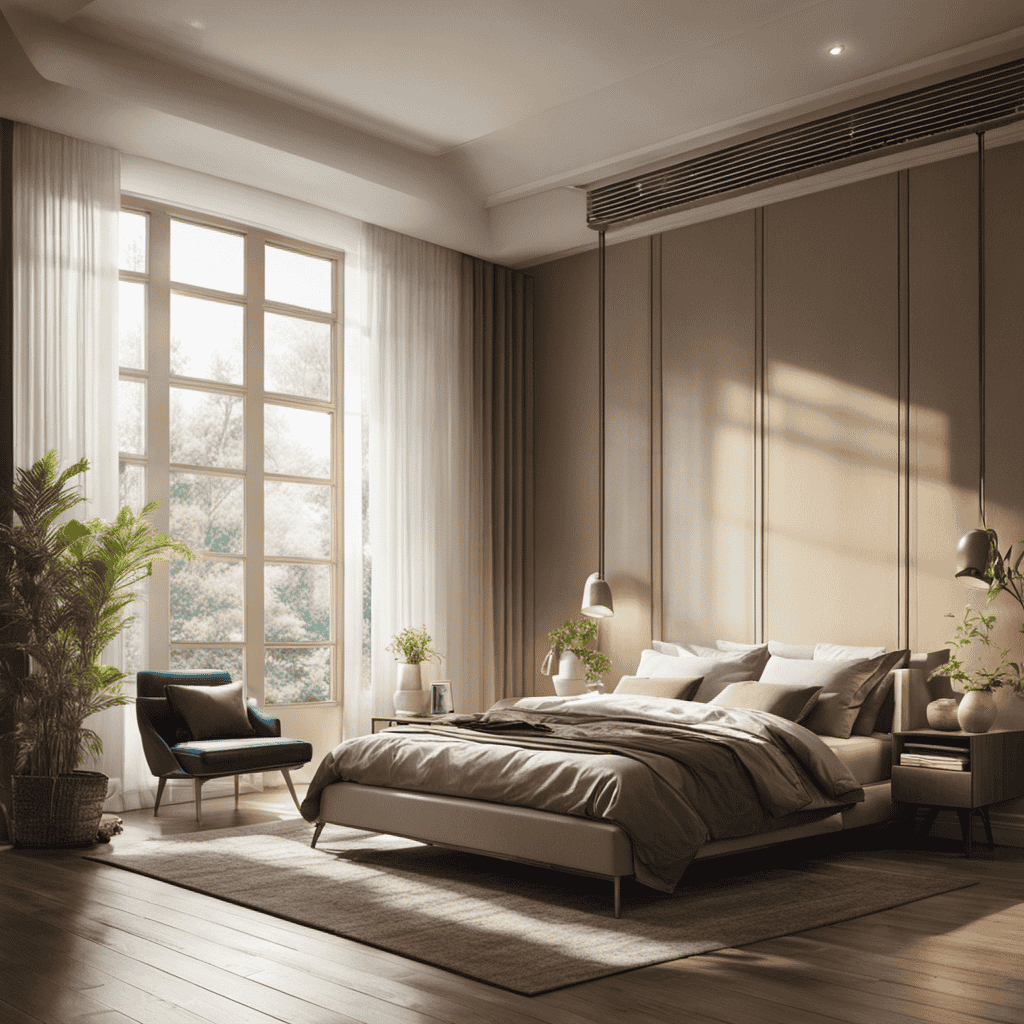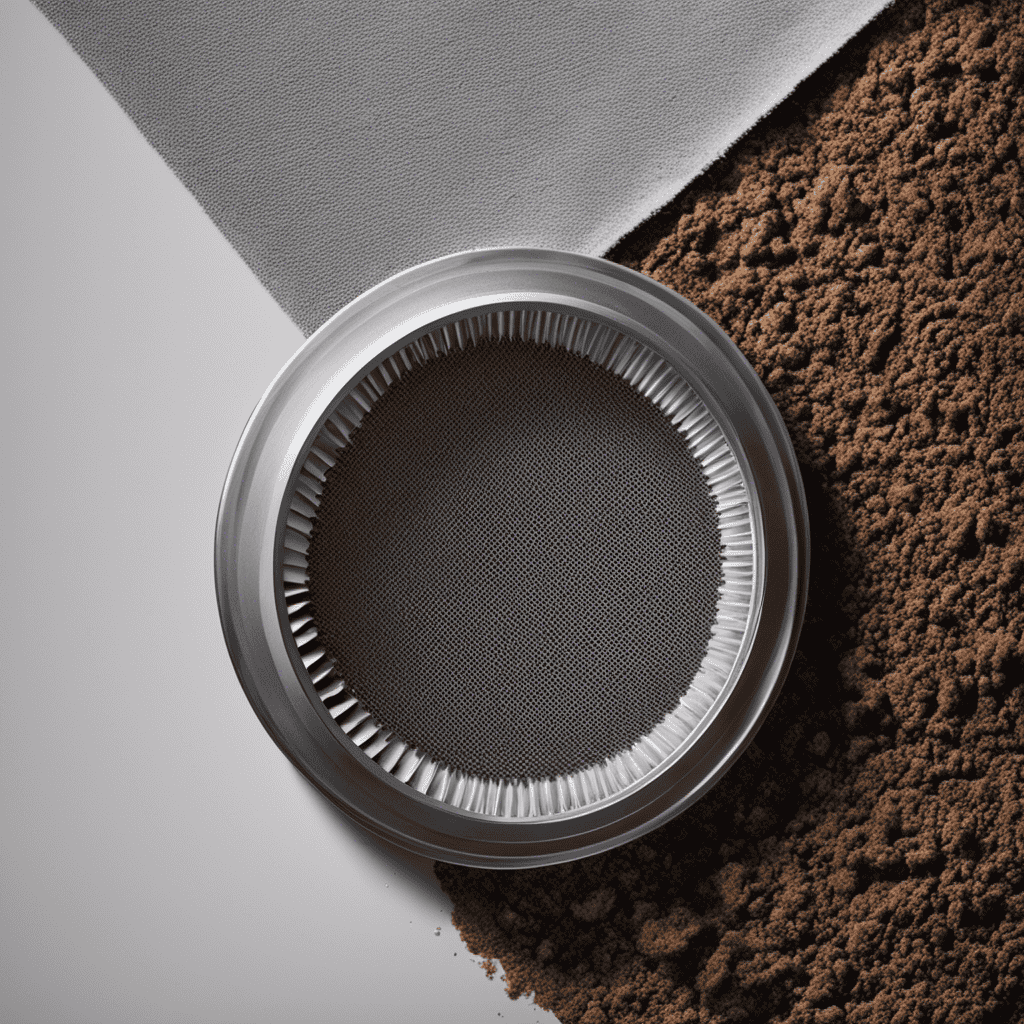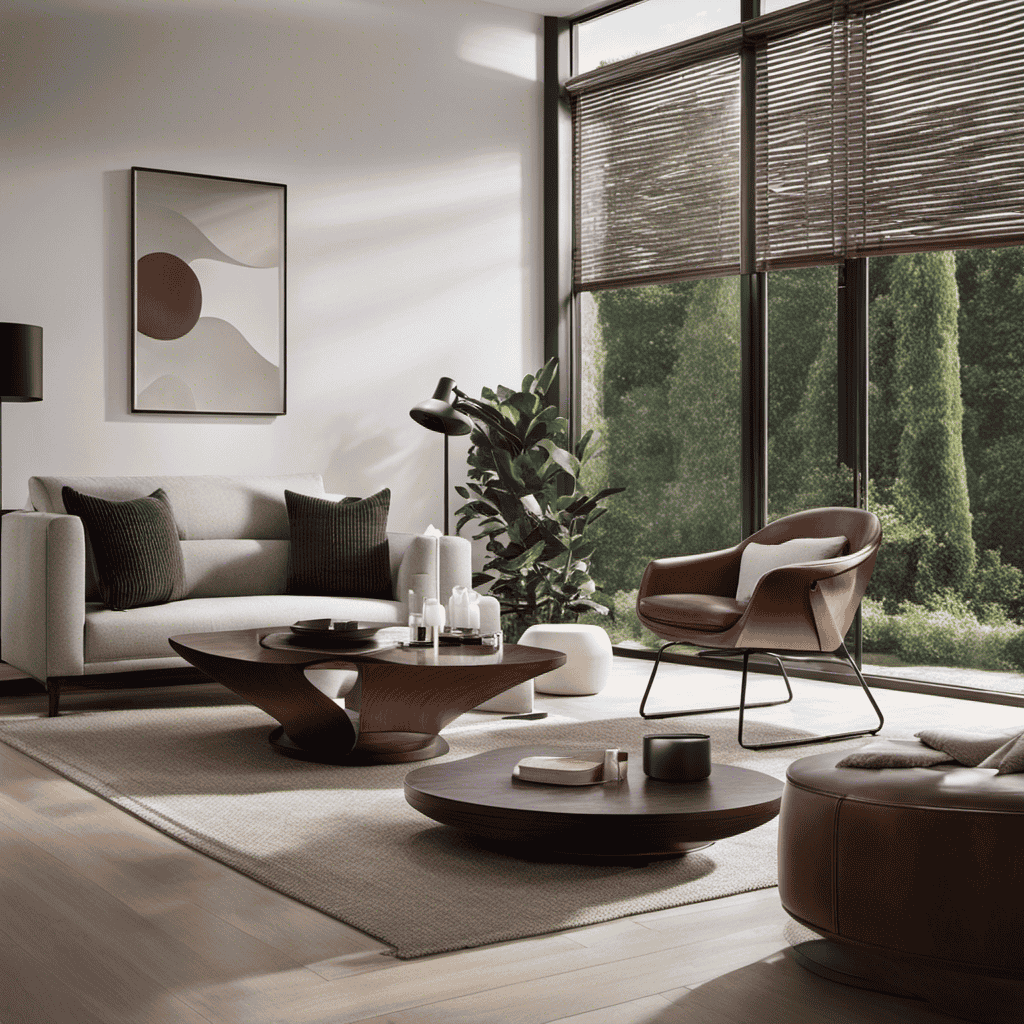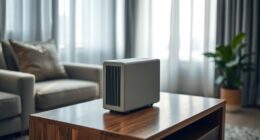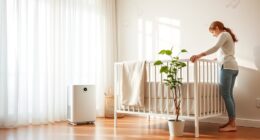I’ve discovered a fascinating way to purify the air in my home – by making my own ozone generator!
With just a few materials and some basic tools, I’ve been able to create a homemade device that effectively removes impurities and odors from the air.
In this article, I’ll guide you through the step-by-step process of building and operating your very own ozone generator.
Get ready to breathe in the freshest and cleanest air you’ve ever experienced!
Key Takeaways
- Safety precautions and protective gear are essential when working with ozone, as it can irritate the respiratory system and cause other health issues.
- Choosing the right materials for the ozone generator, such as a high-quality plate and appropriate power supply, is crucial for durability and effectiveness.
- Proper assembly of the ozone chamber, including securely attaching the ozone generator plate and double-checking all connections, is necessary for safe and efficient operation.
- Testing, adjusting, and operating the ozone generator require regular maintenance, such as measuring ozone output, adjusting voltage or frequency, and cleaning the ozone plates.
Safety Precautions
Before you begin making your homemade ozone generator, it’s important to know and follow the necessary safety precautions. Ozone exposure can pose serious health risks if proper precautions aren’t taken.
Ozone, a highly reactive gas, can irritate the respiratory system, causing coughing, chest tightness, and shortness of breath. Prolonged exposure to high levels of ozone can lead to more severe respiratory problems, such as asthma and bronchitis. Additionally, ozone can also cause eye and throat irritation, headaches, and fatigue.
To minimize these risks, it’s crucial to work in a well-ventilated area and wear protective gear, such as gloves and goggles. It’s also important to keep the ozone generator away from occupied spaces and to use it only as directed.
With these safety precautions in mind, let’s move on to gathering the necessary materials and tools for building your homemade ozone generator.
Gather Materials and Tools
When it comes to embarking on a DIY project, having the right tools is crucial.
In order to successfully build a homemade ozone generator, there are a few essential tools that you’ll need.
Additionally, choosing the right materials is equally important as it ensures the durability and effectiveness of the ozone generator.
Essential Tools Needed
To make a homemade ozone generator, you’ll need a few essential tools. These tools are necessary for ensuring safety measures and troubleshooting techniques while building your ozone generator. Here are the three essential tools you’ll need:
-
Screwdriver: A screwdriver is essential for disassembling and reassembling the components of your ozone generator. It allows you to access the internal parts safely and efficiently.
-
Wire cutters: Wire cutters are necessary for cutting and stripping wires. They help in connecting the different components of the ozone generator and ensure proper electrical connections.
-
Multimeter: A multimeter is used to measure voltage, current, and resistance. It is crucial for testing the electrical components of your ozone generator and troubleshooting any issues that may arise.
By having these essential tools, you can proceed with confidence and address any safety concerns or troubleshooting needs that may arise during the construction of your homemade ozone generator.
Now let’s move on to discussing the next step, which is choosing the right materials.
Choosing the Right Materials
Now that you’ve gathered the essential tools, let’s dive into choosing the right materials for your project.
When it comes to making a homemade ozone generator, it is crucial to select appropriate materials that can withstand the process and ensure safety. One of the primary considerations is the ozone generator plate. It is essential to choose a high-quality plate made of materials like titanium or stainless steel, as they are durable and resistant to corrosion.
Additionally, you need to select an appropriate power supply, such as a high-voltage transformer or a power module, to generate the required electrical charge.
Lastly, ensure that you have proper ventilation and protective gear to minimize potential risks and hazards associated with ozone exposure.
Building the Ozone Generation Circuit
First, gather the necessary components for building the ozone generation circuit. You will need the following tools and materials:
- Breadboard: This will serve as the base for connecting the circuit components.
- Wires: Use jumper wires to connect the various components on the breadboard.
- Circuit diagram: Refer to a circuit diagram to ensure proper placement and connection of the components.
To build the ozone generation circuit, start by placing the components on the breadboard according to the circuit diagram. Connect the wires to form the necessary connections between the components. Make sure to follow the circuit diagram accurately to ensure the proper functioning of the ozone generator.
Once the circuit is complete, you can proceed to test and use your homemade ozone generator for air purification purposes.
Assembling the Ozone Chamber
Once you have placed the ozone chamber components in the correct positions, connect the necessary wires to complete the assembly.
Building techniques for assembling the ozone chamber are crucial to ensure proper functionality and safety. Begin by carefully arranging the chamber’s walls, ensuring they fit securely together.
Next, attach the ozone generator plate to the designated spot inside the chamber. Secure it firmly to prevent any movement during operation.
Connect the necessary wires to the ozone generator plate, ensuring proper polarity. It is essential to follow the wiring diagram provided with the ozone generator kit to avoid any mistakes.
Double-check all connections before powering on the device.
Troubleshooting tips for the ozone chamber assembly include checking for loose connections, damaged wires, or improperly seated components.
Proper assembly and troubleshooting will ensure the effective operation of your homemade ozone generator.
Connecting the Circuit and Chamber
To connect the circuit and chamber, you’ll need to attach the necessary wires to ensure proper functionality. Here are three important steps to follow when connecting the circuit and chamber of your homemade ozone generator:
-
Prepare the wires: Strip the insulation from the ends of the wires that will connect the circuit and chamber. Make sure the exposed wire ends are clean and free from any debris.
-
Connect the wires: Attach one end of each wire to the designated terminals on the circuit board. Then, connect the other ends of the wires to the corresponding terminals on the ozone chamber. Ensure that the connections are secure and tight.
-
Test the connections: Before proceeding, double-check all the connections to ensure they are properly secured. This step is crucial for integrating automation technology into your ozone generator.
Testing and Adjusting Ozone Output
Now, it’s important to check and fine-tune the ozone output to ensure optimal performance.
Ozone output measurement is crucial in determining the effectiveness of your homemade ozone generator. To measure the ozone output, you will need an ozone meter or sensor specifically designed for this purpose. Place the sensor in the area where you want to measure the ozone concentration, and ensure it is calibrated correctly.
Once the measurement is obtained, you can adjust the ozone output accordingly. Ozone output adjustment can be done by modifying the voltage or frequency of the power supply to the ozone generator. It is essential to make small adjustments and re-measure the ozone concentration to avoid excessive ozone production, which can be harmful to humans and the environment.
Building the Air Purification System
When it comes to using ozone for air purification, it is important to consider the safety precautions. Ozone can be harmful if not used properly, so it is crucial to understand the guidelines for safe ozone exposure levels and ventilation.
Additionally, exploring cost-effective DIY options for building an ozone air purification system can be a practical approach for those who want to improve indoor air quality without breaking the bank.
Ozone Safety Precautions
Make sure you’re aware of the safety precautions when using an ozone generator at home. Ozone exposure can pose serious health risks if not used properly.
Here are three important safety precautions to keep in mind:
-
Ventilation: Ensure proper ventilation when using an ozone generator. Open windows and doors to allow fresh air to circulate and prevent ozone buildup in the room.
-
Time limits: Limit your exposure to ozone by following recommended time limits. Ozone levels should not exceed 0.05 parts per million (ppm) for extended periods. It is important to use a timer to control the duration of ozone generation.
-
Occupancy: Never use an ozone generator in an occupied space. Vacate the area and allow sufficient time for the ozone to dissipate before returning.
Cost-Effective DIY Options
Using cost-effective DIY methods can help improve the quality of the air in your home. When it comes to DIY ozone production and homemade air filtration, there are a few options to consider.
One method is creating a homemade ozone generator using readily available materials. This can be done by combining a high-voltage power supply, such as a neon sign transformer, with a ceramic plate or glass tube that acts as a dielectric barrier.
Another option is to build your own air purifier using a combination of activated carbon filters and HEPA filters. These filters can effectively remove pollutants and allergens from the air, ensuring a cleaner and healthier environment.
It’s important to note that proper safety precautions should be followed when working with ozone, as it can be harmful in high concentrations.
Integrating the Ozone Generator and Air Purifier
To integrate the ozone generator and air purifier, you’ll need to ensure that the ozone generator is properly connected to the air purifier unit. This integration offers various benefits and drawbacks that you should consider before proceeding:
Benefits:
- Enhanced air purification: By integrating the ozone generator with the air purifier, you can effectively eliminate odors, bacteria, and viruses from the air.
- Improved indoor air quality: The combined system can remove allergens and pollutants, helping to create a healthier living environment.
- Cost-effective solution: Instead of purchasing separate ozone generators and air purifiers, integrating them allows you to save money and space.
Drawbacks:
- Ozone safety concerns: Ozone generators produce ozone, which can be harmful in high concentrations. It’s important to regulate the ozone levels to ensure safe use.
- Maintenance requirements: The integrated system may require more frequent cleaning and maintenance to ensure optimal performance.
Overall, integrating the ozone generator and air purifier can provide improved air quality and cost savings. However, it’s crucial to properly manage ozone levels and perform regular maintenance to ensure a safe and effective system.
Operating and Maintaining the Homemade Ozone Generator
When operating and maintaining your homemade ozone generator, it’s important to regularly clean and inspect the device for optimal performance. Proper maintenance ensures that your ozone generator continues to effectively purify the air in your space. Here are some maintenance tips and a troubleshooting guide to help you keep your homemade ozone generator running smoothly:
| Maintenance Tips | Troubleshooting Guide |
|---|---|
| Clean the ozone plates regularly to remove any accumulated dirt or debris. | If the ozone generator is not producing ozone, check if the plates are clean and properly positioned. |
| Inspect the wiring and connections to ensure they are secure and free from damage. | If there is a burning smell or unusual noise coming from the generator, immediately turn it off and seek professional assistance. |
| Replace the air filters as recommended by the manufacturer. | If the ozone generator overheats or shuts off unexpectedly, check if the ventilation is unobstructed and the fan is working properly. |
Following these maintenance tips and troubleshooting guide will help you maximize the performance and lifespan of your homemade ozone generator.
Frequently Asked Questions
How Long Does It Take to Build a Homemade Ozone Generator?
It takes a variable amount of time to build a homemade ozone generator, depending on your knowledge and skill level. However, it is crucial to prioritize safety and understand the potential risks and hazards associated with operating one.
Are There Any Alternative Materials That Can Be Used Instead of the Ones Listed in the Article?
Using alternative materials for a homemade ozone generator may pose safety concerns. However, it is possible to find substitutes for the listed materials while ensuring proper ventilation and adhering to safety guidelines.
Can the Homemade Ozone Generator Be Used for Commercial Purposes?
The homemade ozone generator may not be suitable for commercial purposes due to its limitations and potential legal implications. The commercial viability of such a device should be carefully assessed before considering its use in a business context.
How Often Should the Ozone Generator Be Cleaned and Maintained?
To keep your ozone generator running efficiently, regular cleaning and maintenance are essential. Here are some tips: clean the ozone plates regularly, replace any damaged components, and ensure proper ventilation for optimal performance.
Can the Ozone Generator Be Used in Conjunction With Other Air Purifiers or Filtration Systems?
Using ozone generators in conjunction with other air purifiers can provide additional benefits in removing odors and killing bacteria. However, it’s important to consider the potential drawbacks, such as excessive ozone levels and potential health risks.
Can an Ozone Generator be Used as an Effective Homemade Air Purifier?
Yes, an ozone generator can be utilized as an effective homemade air purifier. However, it is important to use it with caution as ozone can be harmful in high concentrations. For a safe and effective homemade air purifier tutorial, consider using an ozone generator in a well-ventilated area and following the manufacturer’s instructions carefully.
Can Homemade Air Purifiers, Including Ozone Generators, Be Effective?
Can you create an air purifier at home? Homemade air purifiers, including ozone generators, might seem tempting, but their effectiveness is questionable. While they may help remove some particles from the air, they often lack the advanced filtration technology necessary to truly purify the air. Additionally, ozone generators can produce ozone, a harmful gas that can worsen respiratory conditions. To ensure clean and healthy indoor air, it’s best to invest in a certified air purifier designed specifically for this purpose.
Conclusion
In conclusion, creating a homemade ozone generator can be a rewarding and cost-effective way to improve air quality in your surroundings.
By following the necessary safety precautions and carefully assembling the ozone generation circuit and chamber, you can successfully build an effective air purifier.
It is essential to regularly test and adjust the ozone output to ensure optimal performance.
Remember, ‘where there’s smoke, there’s fire,’ emphasizing the importance of maintaining and operating the homemade ozone generator responsibly.
With proper care, this DIY project can provide clean and fresh air for a healthier living environment.

